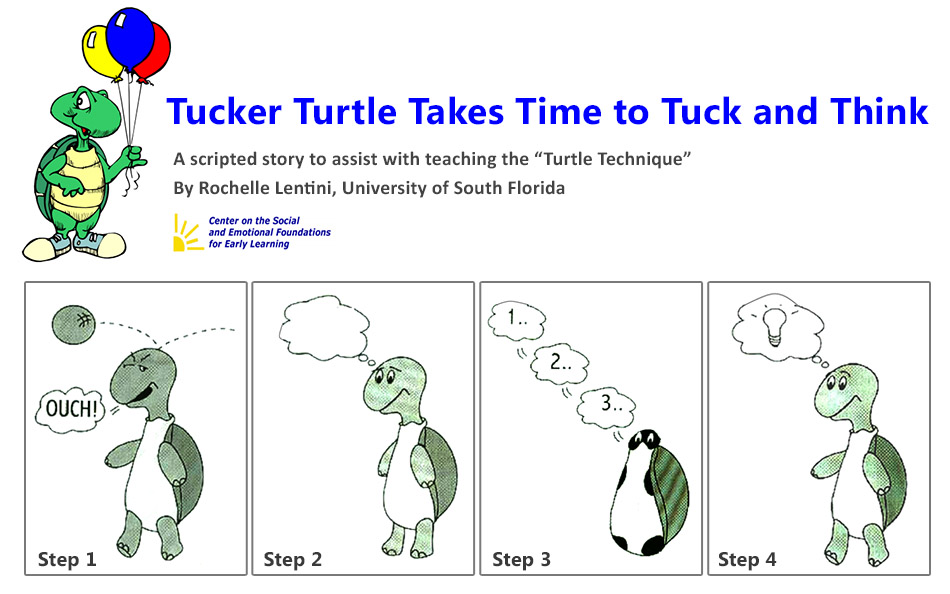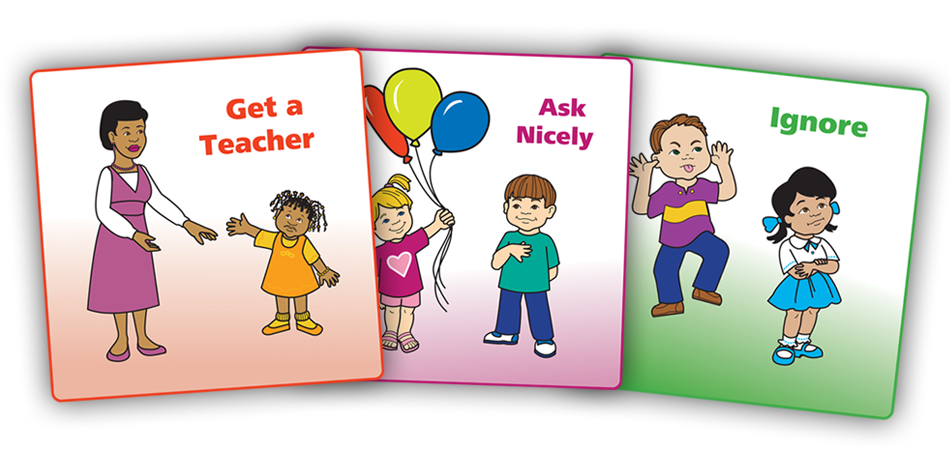- State why social and emotional competence is a protective factor that prevents abuse and neglect.
- Identify strategies to promote social and emotional competence in children.
- Use strategies that promote social and emotional competence in all children.
Learn
Know
As a child development professional, supporting social and emotional competence is a major part of your job. Appropriately, you will spend the bulk of your time with children promoting positive interactions, helping solve problems, and responding to intense emotions. You are promoting positive social and emotional skills in every interaction you have with a child. Evidence suggests that social-emotional competence contributes significantly to skills in other domains like cognitive development and physical development. Researchers at the Center for the Study of Social Policy found an additional benefit of such an emphasis on social and emotional competence: It decreased the amount of child abuse and neglect in families. Parents with children in exemplary programs reported that the skills their children learned related to anger management and violence prevention directly affected the way parents and children interacted. When children expressed their emotions appropriately, parents began to see their children differently.
You can imagine this is true in center settings as well. Children who are socially skilled are more likely to advocate for themselves, ask another adult for help, express their needs, feelings, and interests appropriately and clearly, and connect with others. When children are able to clearly express their needs and wishes, we are better able to understand how to meet their needs. Adults also have an easier time caring for children who are able to listen and follow directions, follow the routine of the program, solve problems, and ask for help rather than engaging in challenging behavior. Social and emotional competence also leads to more positive adult-child relationships and more positive peer relationships. It is through these positive relationships that children learn best.
What does this have to do with preventing child abuse and neglect in center settings? The answer is simple: when you see each interaction as an opportunity to build a positive relationship, you are more likely to view children positively. You are more likely to see behaviors as communication.
- The 4 year old who is “tattling” on another child is saying, “We need your help.”
- The 3 year old who is climbing up the slide is saying, “Help me learn to use this.”
- The 4 year old who throws a soccer ball over the fence is saying, “I’m frustrated.”
- The child running around the room is saying, “Help me find someone to play with.”
Seeing behaviors as communication makes you less likely to become frustrated or overwhelmed. You are more likely to make good decisions about responding to behaviors that challenge you. These decisions help strengthen your relationships with children, and these relationships prevent child abuse and neglect in your program.
What is Social and Emotional Competence?
Social and emotional competence is the ability to interact with others, regulate one’s own emotions and behavior, solve problems, and communicate effectively. Children who are socially and emotionally competent have (Center for the Study of Social Policy, 2018):
- Healthy self-esteem
- Self-confidence
- Self-efficacy
- Self-control
- Personal agency
- Patience
- Persistence
- Conflict resolution skills
- Communication skills
- Empathy
- Social skills
- Morality
Children who have these characteristics are not just successful in classrooms. They're successful in life. There is strong research evidence that social and emotional development contributes to development across domains: cognitive, physical, communication. In many ways, social and emotional development opens the door to richer and deeper learning. In early childhood, we understand that relationships are the foundation of all learning, so it makes sense that having strong relationships helps children learn.
There are three main strategies teachers working with preschool age children can promote social and emotional competence:
- Teaching or helping children learn to recognize and deal with emotions
- Teaching or helping children learn to recognize and solve social problems
- Teaching or helping children learn to be friends
You can learn a great deal about each of these strategies by visiting the CSEFEL and NCPMI websites provided in the References & Resources section at the end of this lesson. You will also learn more in the Positive Guidance and Social & Emotional Development courses. Below is a brief introduction to these three strategies.
Emotional Literacy
Emotional literacy is the ability to recognize emotions in yourself and others. It’s also the ability to express and regulate emotions. Classrooms or programs that promote emotional literacy talk about emotions throughout the day every day. Adults identify and label their own emotions and the emotions of children. They read stories about emotions and help children recognize and identify emotions in themselves and others. Teachers also provide concrete strategies to help children address and express their emotions appropriately. For example, in some classrooms children are taught the “Turtle Technique” to help them stop and think about appropriate ways to express their emotions when they’re angry.

Another way teachers can support emotional literacy is by continuing to assist in children’s development of empathy. Empathy is the ability to take on another person’s perspective. You can do this by describing your own emotions and the emotions of children in your classroom. Begin by asking children to think about how they would feel in certain situations. Encourage opportunities for reflection, critical thinking, and compassion. While children at this age may not fully understand the concept, teaching empathy can begin early. People who understand the emotions of others are less likely to act aggressively toward one another. This means that teaching children empathy can help prevent aggressive behavior in your classroom. Teaching empathy also brings awareness to your own mental and emotional health, which can help prevent child abuse and neglect in your program. Through repeated exposure at young ages children can begin to develop skill in empathetic perspective taking and strengthen emotional literacy. Learn more about the difference between empathy and sympathy here: https://www.youtube.com/watch?v=1Evwgu369Jw.
Problem-Solving
All of us experience problems. Our success lies in how we deal with those problems. The skill of successfully navigating complex social situations does not necessarily come naturally. In classrooms that foster social and emotional competence, children are taught specific strategies for solving social problems. They may learn to recognize they have a problem, think of solutions, think about the outcomes or consequences of their solutions, and give it a try. Adults may also help children generate solutions to try.

Friendship Skills
Learning how to make and keep friends is a lifelong skill. There are a variety of skills that are considered friendship skills. These include:
- Asking to join others in play
- Offering ideas and suggestions
- Sharing
- Taking turns
- Giving compliments
- Knowing how and when to apologize
In classrooms that foster social and emotional competence, staff members look for opportunities to promote friendship skills. They encourage friendly behavior, model friendly behavior, and set up opportunities for children to practice friendship skills.
To learn more about specific ways you can use these strategies to promote social and emotional competence, watch the following video from the National Center for Pyramid Model Innovations' (NCPMI) website: https://challengingbehavior.org/document/promoting-social-emotional-competence/
See
What do programs that promote social and emotional competence look like? Watch this video to find out.
Facilitating Social Development for Preschoolers
Do
Some of the ways that you can promote children’s social and emotional competence include (Center for the Study of Social Policy):
- Give children an opportunity to say goodbye when they are leaving the program or when staff changes occur.
- Help children process class or staff changes.
- Communicate staffing changes to parents and children.
- Help children enter into new settings (e.g. by allowing for transition/orientation time).
- Encourage children to express their feelings.
- Encourage sharing, taking turns, and cooperative play.
- Offer children many ways to express themselves: theater, music, visual arts.
To foster emotional literacy you can:
- Read books about feelings and make sure your classroom library has plenty of books about feelings.
- Post photos of people with various emotional expressions.
- Encourage and reinforce children to use feeling words.
- Notice and label children’s feelings.
- Plan activities to teach and reinforce concepts on emotions.
- Label your own feelings.
To promote problem-solving you can:
- Teach the steps to solving problems.
- Engage children in generating solutions to common challenges.
- Post visual reminders about problem-solving.
- Recognize and give specific feedback to children who have been “good problem solvers.”
- Help children reflect on their own problem-solving skills.
- Change your approach to meet individual children’s needs.
To promote friendship skills, you can:
- Encourage children to work together.
- Make positive and specific comments about children who are working together, helping each other, etc.
- Use a variety of strategies to teach friendship skills (e.g., sharing, turn taking, helping others).
- Provide children with planned opportunities to practice friendship skills.
- Model appropriate friendship skills in interactions with children and other adults.
Explore
In the Observing Social Interactions activity below, you will spend 15 minutes observing a child or a group of children. Write down the behaviors you see that are social (a child offers another child a toy) and the behaviors that might be signs that a child could use support around developing social and emotional competence (a child excludes other children from play). Remember to include social interactions between adults and the child, too. After your observation, talk with your administrator, trainer, or coach about how you could help the child learn or use social behaviors.
Apply
There are a variety of tools available to help you apply what you have learned. Use the Social Emotional Teaching Strategies Checklist below created by, and available through the Center on the Social and Emotional Foundations for Early Learning (CSEFEL). Use it to make sure you are doing all you can to promote social and emotional competence in your classroom or program. If you have questions regarding any of the information below, you’re encouraged to discuss them with your trainer, coach, or administrator.
Glossary
Demonstrate
Center for the Study of Social Policy. (2018). Strengthening Families: A Protective Factors Framework. https://cssp.org/our-work/projects/protective-factors-framework/
Center on the Social and Emotional Foundations for Early Learning (CSEFEL). Resources available from www.vanderbilt.edu/csefel
National Center for Pyramid Model Innovations. (n.d.). Tampa: University of South Florida. http://challengingbehavior.cbcs.usf.edu/


